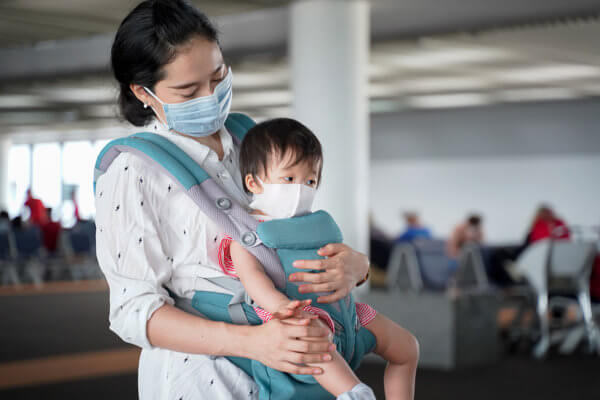With warmer weather comes more exposed arms, legs, and tushies. Protecting babies and toddlers delicate skin from harmful UV rays is one of the most important things you can do for your little one. NewParent.com spoke with Dr. JJ Levenstein, a pediatrician, mom, and creator of the MD Moms line of baby skincare, about the do’s and don’ts of sun protection.
At what age should you start putting sunscreen on your baby?
If shade and appropriate clothing (lightweight long pants, brimmed hats, long-sleeved shirts) aren’t available, the American Academy of Pediatrics (AAP) recommends that even babies under six months apply sunscreen to certain areas of the body, such as the face and the backs of the hands. Beyond six months, babies may use sunscreen on the entire body, paying close attention not to apply it too closely to the eyes. If you’re using a new sunscreen for your baby, first test a small amount on the skin (extremities and torso). If the sunscreen irritates your child’s skin, wash it off and discontinue use.
What SPF should you use?
The AAP recommends using a sunscreen with an SPF (sun protection factor) of at least 15. Sunscreen with a higher SPF number offers greater protection from UVB rays. UVB rays, or burning rays, affect the top layer of the skin, while UVA rays, also known as aging rays, penetrate deep into the skin to cause wrinkling and spotting. Both can increase the risk of skin cancer.
Young children should use a broad spectrum (protects from both UVB and UVA rays) physical sunscreen, which contains zinc oxide and titanium dioxide. These active ingredients provide the best protection for baby without irritating her sensitive skin. Also, unlike a chemical sunscreen (which may be more irritating and take up to 20 minutes to begin working), a physical sunscreen deflects, rather than absorbs, UV rays and begins working immediately upon application.
Are there any sunscreen ingredients that should be avoided on babies and toddlers?
Babies and toddlers should avoid ingredients such as avobenzone, homosalate, octyl cinnamate, Parsol and other chemical sunscreens, which can irritate young or sensitive skin.
Do stroller shades or hats provide enough sun protection on their own?
Stroller shades and hats shouldn’t replace sunscreen, but instead should be used as an added layer of protection from UV rays. A hat with a brim at least 2.5 inches wide can help shade your child’s face and protect the scalp, and sunglasses that block 99-100 percent of UV rays (with ANSI-rated UVA and UVB protection) help protect the skin around the eyes and the retinas. Also, it’s important to dress your children appropriately for the sun. Try UV protective clothing (we recommend Cabana Life) or an SPF rinse on tightly woven cotton clothing, which can raise the SPF value from 5 (the SPF value of an average T-shirt) to SPF 30.
If a child does get a sunburn, what’s the best remedy?
As soon as your child gets a sunburn, she should seek shade, or better yet, head indoors. A cool bath, topical application of aloe and administration of an over the counter pain reliever (ibuprofen or acetaminophen) can offer relief from a painful sunburn (if approved by your health care provider). If blisters form consult your health care provider for urgent assistance.
Does the type/SPF of sunscreen have to change as your child gets older?
When a child turns two, she can switch from a baby sunscreen to a kids sunscreen, so long as it has an SPF of at least 15 to 30. Still, a person of any age with sensitive skin may require products that are especially gentle to the skin.
What’s the most important thing parents can do for their children when it comes to sun protection?
Teach your children the importance of sunscreen and sun protection early—not just during the summer, but year-round. Remember that when used correctly, sunscreen can help protect against sunburns and certain skin cancers, but it should not be used as a reason to stay in the sun for a long time. Be an example to your children by applying your sunscreen daily, too!
About Dr. JJ Levenstein
Dr. JJ Levenstein is a board-certified pediatrician and fellow of the American Academy of Pediatrics with a thriving private pediatric practice in Encino, Calif. She serves on the clinical staff of two hospitals and has been consistently voted one of the Best Doctors in America® from 2003 through 2008. Drawing from her experience as a pediatrician and mom, Dr. Levenstein serves as president and co-founder of MD Moms, makers of Baby Silk, the first personal care line for babies developed by pediatrician moms.
Expert tips for protecting those delicate tushies.



